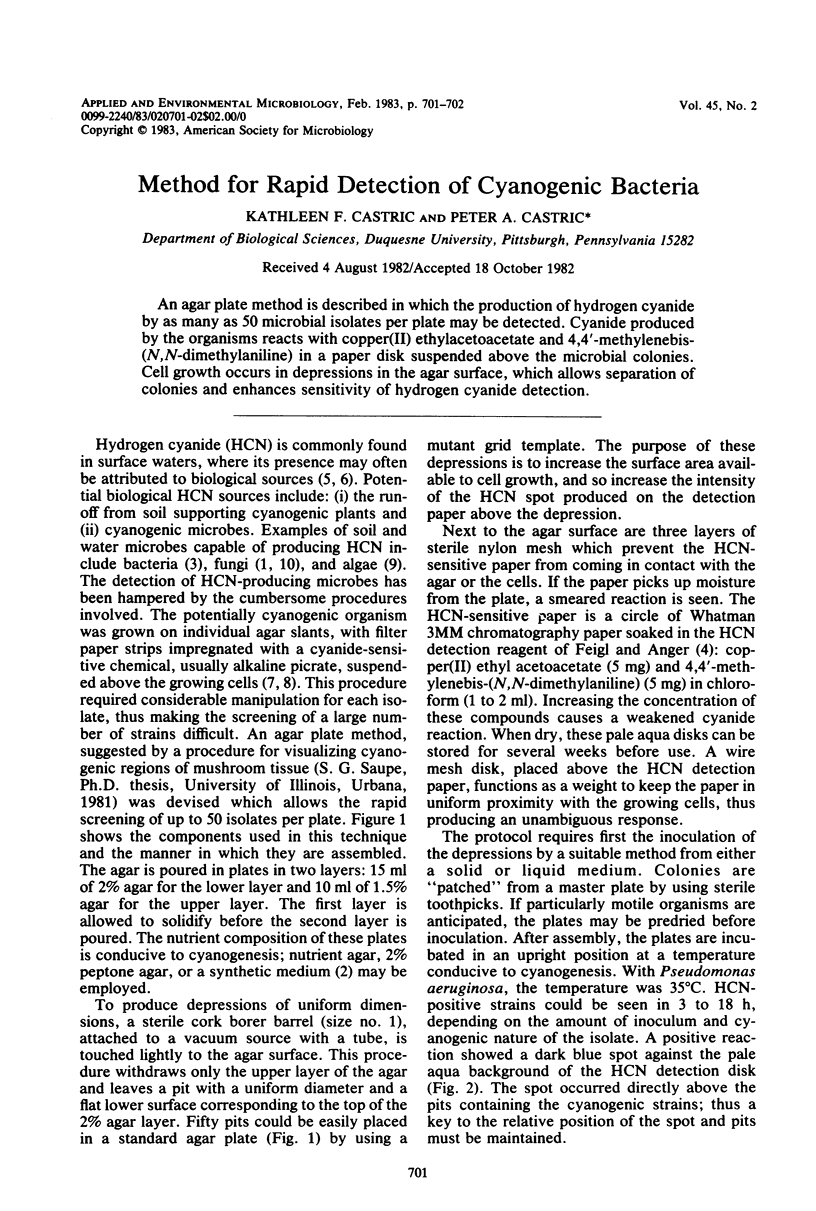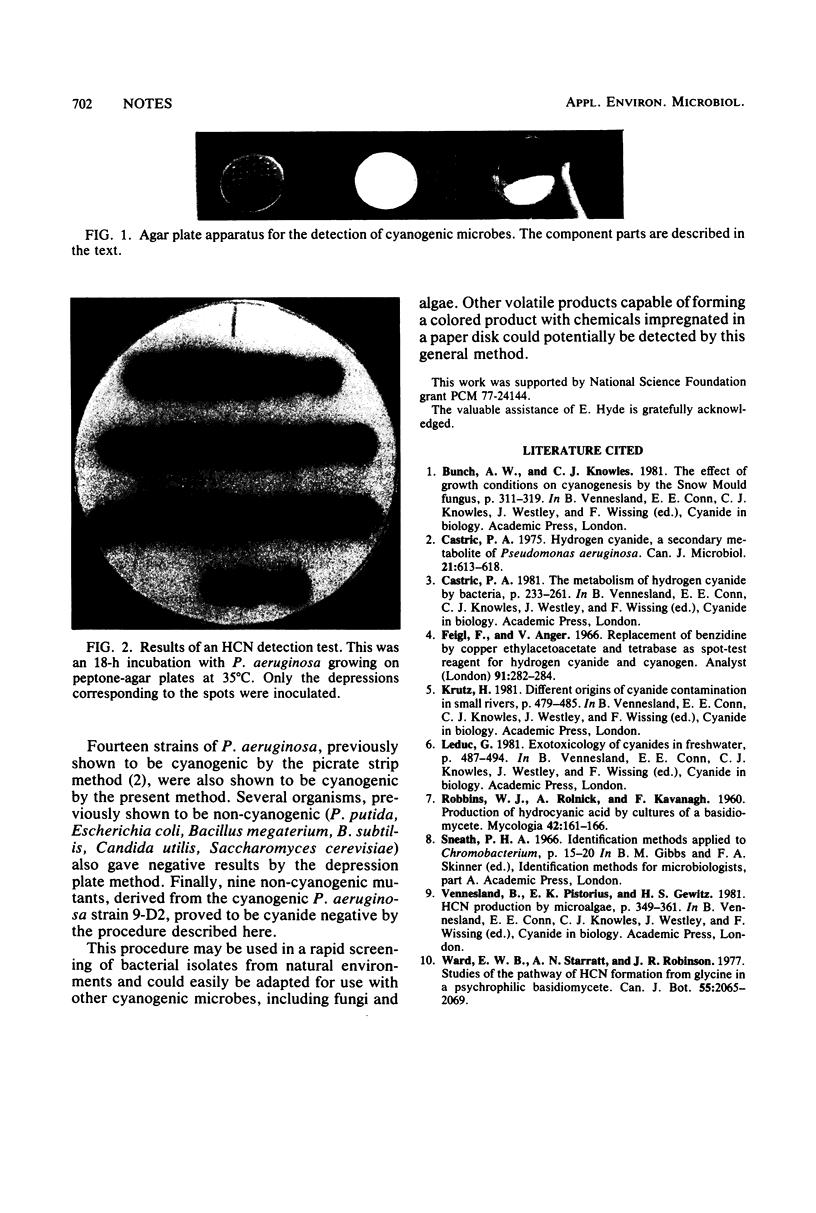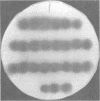Abstract
An agar plate method is described in which the production of hydrogen cyanide by as many as 50 microbial isolates per plate may be detected. Cyanide produced by the organisms reacts with copper(II) ethylacetoacetate and 4,4′-methylenebis-(N,N-dimethylaniline) in a paper disk suspended above the microbial colonies. Cell growth occurs in depressions in the agar surface, which allows separation of colonies and enhances sensitivity of hydrogen cyanide detection.
Full text
PDF

Images in this article
Selected References
These references are in PubMed. This may not be the complete list of references from this article.
- Castric P. A. Hydrogen cyanide, a secondary metabolite of Pseudomonas aeruginosa. Can J Microbiol. 1975 May;21(5):613–618. doi: 10.1139/m75-088. [DOI] [PubMed] [Google Scholar]
- Feigl F., Anger V. Replacement of benzidine by copper ethylacetoacetate and tetra base as spot-test reagent for hydrogen cyanide and cyanogen. Analyst. 1966 Apr;91(81):282–284. doi: 10.1039/an9669100282. [DOI] [PubMed] [Google Scholar]




